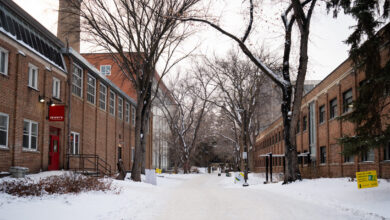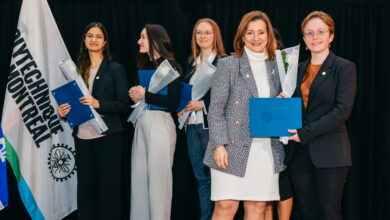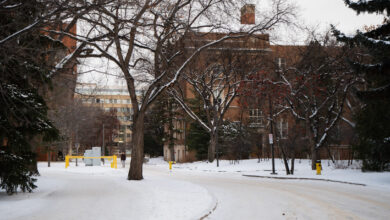 supplied
suppliedMcKenzie Kuhn worked in the renewable resources department at the University of Alberta while earning her PhD in land and water resource management from the faculty of agricultural, life, and environmental sciences (ALES). The study she led to earn her PhD helps to improve estimates of methane emissions from boreal-Arctic wetlands.
As an undergraduate student, Kuhn had the opportunity to complete an internship in eastern Siberia where she “lived on a floating barge that took [them] from the boreal ecosystem to the Arctic tundra.”
It was through this experience that she was exposed to “the beauty of the Arctic and the pressing challenges of climate change in this ecosystem.”
The study she led was novel because it accounted for the difference in methane emissions from lakes and wetlands, which allowed for further classification of these aquatic ecosystems.
The study found that methane emissions could rise 31 per cent by the year 2100 under moderate warming. Kuhn explained that emissions from northern ecosystems, like wetlands and lakes, will increase as the globe warms.
A positive feedback loop exists between natural methane emissions and global warming, “where warming temperatures leads to more greenhouse gas emissions,” she said.
It is important for researchers to be able to accurately predict methane emissions from ecosystems in the future, because this knowledge helps them develop an idea of how much warmer the earth will be, according to Kuhn.
Kuhn researches the response of boreal-Arctic ecosystems to climate change
When considering the global carbon cycle, we must consider both human fossil fuel emissions and the emissions from natural ecosystems, Kuhn said.
“A lot of the emissions targets are really dependent on our inventories of human emissions of methane and [carbon dioxide (CO2)].”
In terms of Canada’s ecosystems, “a lot of the wetlands are permafrost peatlands,” meaning frozen wetlands, and “a lot of the carbon that’s in these wetlands is currently inaccessible to microbes and the rest of the ecosystems.”
As the globe warms, the permafrost peatlands are thawing, which converts them into different classes of wetlands.
“The carbon becomes accessible and can be converted into greenhouse gas emissions,” Kuhn said.
It is important to know the contribution of greenhouse gases from natural ecosystems as the temperature of the Earth rises in order to adjust our fossil fuel emissions targets, Kuhn said.
She explained that “we’re naturally going to have to adjust down how much we’re allowed to emit as humans to hit these targets.”
According to Kuhn, one of the biggest challenges they encountered when analyzing data from almost 200 studies was standardizing the data.
“A lot of people will use different approaches, provide data in a different format, or often they might not provide the data in a format that is usable,” she explained.
“It really comes down to us to curb human emissions of these gasses,” Kuhn says
She shared that “another wonderful thing was getting to know all the different types of research that’s out there” and that “we can start to answer bigger questions than the original intent of one single study.”
When asked what she wished more people understood about climate change, she said that “we live on a habitable Earth because we have some greenhouse gases in the atmosphere. We have this threshold where we need carbon dioxide and methane in the atmosphere to keep our Earth warm.”
She pointed out that “the contribution of methane from natural ecosystems has historically been a really good thing.” In terms of what needs to adapt moving forward, she said “it really comes down to us to curb human emissions of these gasses.”
Kuhn’s future research will aim to identify gaps in the current literature. Through prior research, her team identified the need for “a lot more wintertime measurements.” Logistically, researchers typically travel north when it is warm, as it is easier to get there and obtain measurements, she explained.
Another key area for future research relates to the fact that “not all ecosystems emit methane.”
“Some can actually take methane out of the atmosphere, including boreal forests, some trees and some alpine tundra.”
Some of her current work at the University of British Columbia (UBC) includes “looking at how alpine tundra ecosystems are responding to warming.”
She intends to continue researching alpine tundra and discover whether we will “see more methane being taken out of the atmosphere, or the opposite response where the ecosystems that used to take methane out of the atmosphere become ecosystems that emit methane.”




